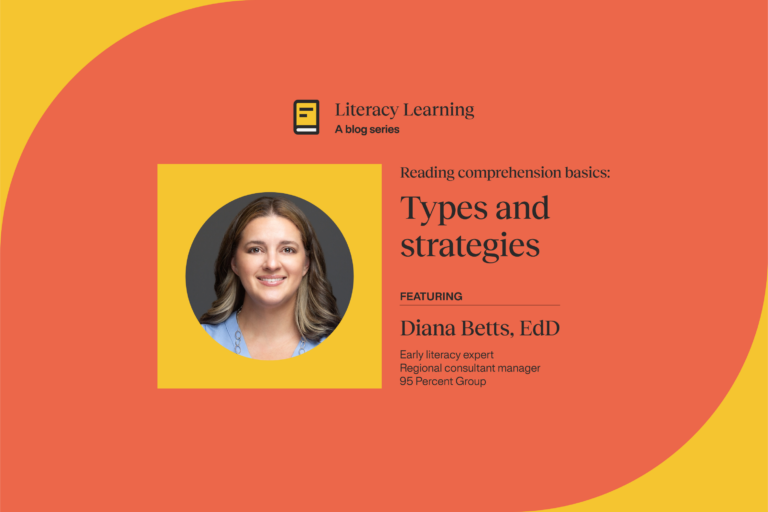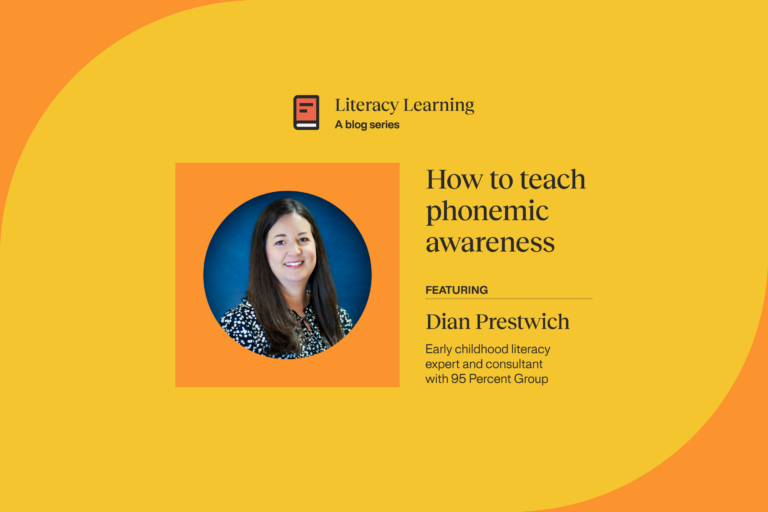Give your student readers a boost this school year!
With the new school year upon us, we know your focus is on your classroom. After a few exceptionally challenging years, how are you planning to support your students in having an awesome and successful year, especially in literacy mastery? Your students are starting school with a wide range of experiences in reading during the summer—from enrichment to slow down and in some cases, backsliding. We have a few evidence-based strategies to help all your readers boost their literacy skills this fall, and in the entire year ahead.

The benefits of a high-quality, structured literacy program
An independent research study conducted by Learning Experience Design (LXD) Research on elementary students in Lexington Public Schools in Nebraska builds the case for implementing a high-quality, evidence-based structured literacy program for the 2023–2024 school year. Conducted during the 2020–2021 and 2021–2022 school years, the study shows that using explicit, systematic phonics instruction during the school year can decrease summer learning loss by as much as 200 percent and help students retain their reading skills.
Here are five strategies to help you succeed this school year with a strong grounding in evidence-based structured literacy instruction.
1. Launch the new year with a phonics boost and tune-up for your students.
Students will benefit from a review of last year’s phonics skills and word study, and educators need a flexible, easy-to-use proven program with an ecosystem approach.
The 95 Phonics Booster Bundle®: Tune-Up helps teachers catch students up on last year’s skills without waiting for assessments—linking instruction across grades 1–3, the 95 Phonics Booster Bundle Tune-Up provides a seamless continuum of foundational skills to strengthen students’ grasp of the prior year’s phonics skills. Teachers can target specific skill needs or deploy the flexible lesson system in 20-minute targeted, Tier 2 structured literacy lessons, using the 25-day program. And while designed for Tier 2 instruction, the versatile 95 Phonics Booster Bundle: Tune-Up program can be used in other formats: Tier 1 small groups, whole-class instruction, one-on-one tutoring.
2. Adopt a prevention mindset.
Research on the Tier 1 program, 95 Phonics Core Program®, demonstrates how a phonics program used during the year can help your students retain what they learn this year through the summer and into fall 2024–2025.
The LXD research in Nebraska concluded that rising 2nd graders using Tier 1 95 Phonics Core Program in the 2021–2022 school year retained more information than they did the previous summer. Rising 3rd graders not only retained more information than the previous summer, but also scored higher at the start of 3rd grade than at the end of 2nd grade.
At the beginning of the 2022-2023 school year, Renee Hall, supervisor of reading K-5, and her colleagues at Wicomico County Public Schools in Maryland gave students the iReady diagnostic tests. They were impressed with results from their original, pilot elementary school in particular. “Students had made strong progress and did not even have the summer slide that we thought they may,” she said.
3. Spark and sustain the joy of reading. A common language and routines are key.
Robert Palazzo is the principal of Panther Valley Elementary School in Nesquehoning, Pennsylvania. When he noticed after 18 months that his students were not progressing with the balanced literacy program they’d deployed, he investigated the science of reading and led this school in finding new sources of funding to make the shift to evidence-based, structured literacy. In our recent blog post about Panther Valley, Palazzo had this to say:
“We talk a lot about fostering a love of reading—but you have to be able to understand what you’re reading to love reading. Decoding is the beginning of this.”
In another Insights blog post, Marcia Biermann, a second-grade teacher at Fort Zumwalt School District in O’Fallon, Missouri discusses the outcome of common routines that she observed with her second-grade students. The entire district had committed to making the shift to structured literacy beginning in 2019. All 270 teachers in the Fort Zumwalt School District did the Language Essentials for Teachers of Reading and Spelling (LETRS®) training. Then in 2021, several schools in the district piloted the 95 Phonics Core Program.
“I can honestly tell you last year and this year, it is part of my kids’ favorite time of the day. They love phonics and word study time. Because it is routine-oriented, when it’s sound spelling mapping time, they know exactly what to do; when it’s using your sound chips, they know exactly what to do; when it’s finger stretching they know. I see them excited, up and moving, loving it. And when I say, ‘Okay, it’s time for phonics, and word study time,’ to hear them be excited and cheering, that tells me it’s working.”
4. Understand the value and benefits of an ecosystem approach to the science of reading.
An ecosystem approach includes professional learning, assessment, and instructional resources so that teachers can turn the science of reading theory into practice and help each child make progress. It makes the experience across products and tiers of instruction as seamless as possible for students and teachers. How? All products and tiers share a common language—they all use the same routines, procedures, and descriptions.
Using an approach that is based in structured literacy, the One95™ Literacy Ecosystem integrates professional learning and evidence-based literacy products into one cohesive system that supports consistent instructional routines across tiers and is proven and trusted to help students close skill gaps and read fluently.
Principal Robert Palazzo sums up the effect of such a cohesive system: “95 Percent Group has allowed for a common language. For example, everyone knows that skill 6 is regular vowel teams—whether you’re doing the 95 Phonics Screener for Intervention™ (PSI™), the 95 Phonics Lesson Library™, or the 95 Phonics Chip Kits™—we are able to clearly speak about a student’s skill level and what they need and intervene at a high level.”
Once both teacher and students know the routines, students can really concentrate on the learning and the teacher can concentrate on the students’ responses and make those important next-step decisions.
When our students who had the 95 Percent Group program last year moved up to the next grade level this year, it was very easy for them to slip right back into the routines. They didn’t have to spend as much time at the beginning of the year as they did last year learning the structures for the lesson.
Stephanie Sanker
5. Seek out inspiration, connection, and support.
95 Percent Group offers a range of professional learning opportunities, including frequent webinars with inspiring school leaders, and regional, in-person science of reading symposia that bring top experts and best practices to educators and school leaders. Regular blog posts offer success stories, case studies, and best practices to help expand your understanding and practice of the science of learning. Stay up with thescienceofreading.com to make sure you receive all the latest resources, research, and best practices on the science of reading.
Learn more
Are you interested in learning about how you can bring an effective and efficient structured literacy approach, grounded in the science of reading, to your school or district? Contact us today.



